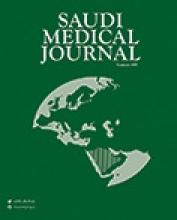Abstract
OBJECTIVE: To correlate the values generated by direct total blood volume measurement with pulmonary artery catheter parameters and commonly used laboratory values in the management of critically ill patients.
METHODS: This study was carried out at the Lutheran Medical Center, Brooklyn, New York, United States of America, during the period 1998-1999. We prospectively correlated the total blood volume (TBV) values generated by the blood volume analyzer (BVA)-100 using I131-tagged albumin, with the values obtained from pulmonary artery catheter (PAC) of central venous pressure, pulmonary capillary wedge pressure, cardiac output, and with laboratory values of hematocrit, lactate, arterial blood gas and mixed venous blood, in critically ill patients. Twenty-four intensive care unit (ICU) patients were studied. Inclusion criteria: Admission to the intensive care, pulmonary artery catheter insertion and (APACHE) II Acute Physiology and Chronic Health Evaluation score of 8-30 (mean=17.875). Exclusion criteria: Pediatric patients, hemodynamically normal or stable patients, pregnancy, and critically ill patients that were managed in an ICU setting without PAC catheter. Height and weight were recorded. After the collection of an initial blood sample (5cc), one cc of I131-tagged albumin (15-25 microcuries) was injected using a patented syringe. Five venous samples were collected after the isotope injection.
RESULTS: The collection times were entered into the BVA-100. Hematocrit measurements were performed in duplicate. Blood samples were centrifuged and one ml from the plasma of each sample was pipetted (in duplicate) into the sample tube then placed into the BVA-100. The results showed that the TBV did not correlate with either pulmonary capillary wedge pressure or central venous pressure, and except for the cardiac output, there is no correlation between pulmonary capillary wedge pressure readings or TBV results and the other parameters considered in this study.
CONCLUSION: This method can be released from the research fields and can be safely incorporated into the clinical arena. It provides an accurate assessment of the volume status in intensive care unit patients.
- Copyright: © Saudi Medical Journal
This is an open-access article distributed under the terms of the Creative Commons Attribution-Noncommercial-Share Alike 3.0 Unported, which permits unrestricted use, distribution, and reproduction in any medium, provided the original work is properly cited.






